American Honey
Director: Andrea Arnold
Starring: Sasha Lane, Shia LeBeouf, Riley Keough, and Will Patton
There is a moment in director Andrea Arnold’s film “American Honey” where a group of young people party around a bonfire behind a hotel, you can feel the tension, the frustration, the anger, and the confusion of youth in this instant, it’s one of the most genuine and authentic moments of any film this year. The achievement of “American Honey”, amidst a slew of imperfections, is that it operates to create these kinds of raw and honest moments that you can’t help but be drawn into the world of the characters.
Ms. Arnold composes this film in a very authentic way, cameras on shoulders walking with characters, cameras sitting next to characters as if you are part of the conversation, like a silent character interwoven into the narrative. This is the method that defines every step of “American Honey”, a rather long and many times drawn out experiment developed through a group of young people making their way, somewhat aimlessly, through the world.
Star (Sasha Lane) is a young woman watching over her siblings, dumpster diving and hitchhiking in a small town. Star is anxious and worn-out, she is looking for a way out of a life that doesn’t display any sort of direction. Escape comes in the form of an enigmatic traveller named Jake (Shia LeBeouf) who travels from state-to-state selling magazine subscriptions. Star runs away and into the midst of this group of travellers, who are all working for a woman named Krystal (Riley Keough) who is queen to this group of wanderers.
“American Honey” can be a difficult film at times. It’s a meticulous process, one that takes its time building an experience. The fact that Ms. Arnold is patient enough as a filmmaker to let things happen and unravel organically is impressive. She many times finds the beauty in the most mundane of situations and places. With that said, it also doesn’t work like it should many times throughout. The film meanders from scene to scene, with images of Middle America as a backdrop and the constant reminder of the socioeconomic divide throughout America in the form of environment and with the characters composing a road traveling family from different walks of life. When the film succeeds, these aspects all shine in the very effective ways.
It's easy to see that these young people are desperate for change, but they are also complaisant when they find something comfortable. You can feel the yearning for bigger opportunities from them; their entire job as door-to-door sales people is based around being the biggest "earner" for the company, an achievement that comes with perks like riding around in a Mustang convertible and playing the role of leader to the group. Shia LeBeouf's character Jake is this company superstar, yet even in this sought after position Jake is still unsatisfied. This remains a theme throughout for these young people. Will they every find something that they are truly content with, something that makes them happy?
Ms. Arnold does an exceptional job with these young characters, many of them first time actors. In the lead is Sasha Lane, an actress picked off the beach in Florida by the director, who brings a fiery ambition and a lively energy to the role of Star. Shia LeBeouf is the most recognizable name in the film, he is given plenty of room to compose the dangerous character and the result is a mixed bag of emotions which is exactly what the character is. One moment ready to risk everything and the next firmly planted in a place of indecision. One of the best performances comes from Riley Keough playing the opportunistic boss of the group. She is menacing and compassionate, sometimes at the same time; a character that feels pulled from another film, "Spring Breakers", that deals with these same coming-of-age themes.
"American Honey", a title taken from a Lady Antebellum song, is going to connect differently with each individual person. Everyone has a different perspective of the world because of experiences taken from the journey through it. That's what this film ultimately is, a journey through environments with no clear ending or easily explained theme. It's not so much about the destination but rather the journey. Some trips are long and arduous, something you'd never want to do again. Some are life affirming and rewarding, something you'll want to cherish and recreate. The journey through "American Honey" will be a similar path.
Monte's Rating
3.50 out of 5.0









 The Magnificent Seven
The Magnificent Seven
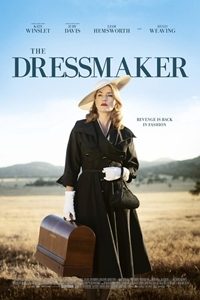 ‘The Dressmaker’ needs some alterations
‘The Dressmaker’ needs some alterations
 ‘Storks’ delivers a fun animated experience
‘Storks’ delivers a fun animated experience
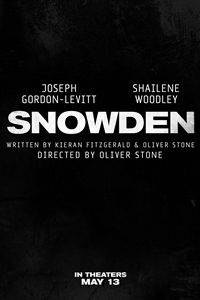 Oliver Stone’s ‘Snowden’ is a valuable ‘Citizenfour’ companion piece
Oliver Stone’s ‘Snowden’ is a valuable ‘Citizenfour’ companion piece
 Blair Witch
Blair Witch
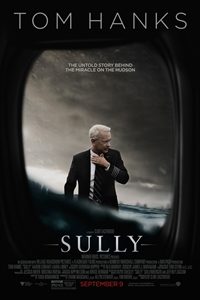 Hollywood legend Clint Eastwood’s 35th directorial effort, “Sully” (3/4 stars), arrives in theatres on Friday, Sept. 9 with Tom Hanks in the title role. The film chronicles U.S. Airways pilot Chesley ‘Sully’ Sullenberger’s heroic landing on the Hudson River in January 2009. With another solid Eastwood film in theatres, this seems like a perfect time reflect upon his work. Although I would love to compile a Top 20, 17 or 15 list, my pragmatic nature and movie critic tendencies “require” me to somehow limit the number of movies to 10, so here are my Top 10 films directed by Clint Eastwood.
Hollywood legend Clint Eastwood’s 35th directorial effort, “Sully” (3/4 stars), arrives in theatres on Friday, Sept. 9 with Tom Hanks in the title role. The film chronicles U.S. Airways pilot Chesley ‘Sully’ Sullenberger’s heroic landing on the Hudson River in January 2009. With another solid Eastwood film in theatres, this seems like a perfect time reflect upon his work. Although I would love to compile a Top 20, 17 or 15 list, my pragmatic nature and movie critic tendencies “require” me to somehow limit the number of movies to 10, so here are my Top 10 films directed by Clint Eastwood.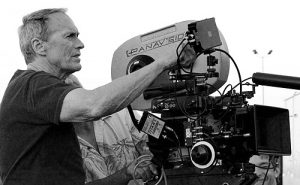 some Union fighters burn his house and kill his wife and son. With nothing to live for, he joins a group of Confederates, and soon after, he finds himself on his own and an outlaw. In a film that truly showcases everything about the American Western, Wales covers a winding story from Missouri to Texas and partners with – at various times – a teenager, two Native Americans and a family from Kansas. Eastwood mixes good fun with plenty of gunfights, as Wales offers a barrel full of memorable lines, countless visuals of his chewing tobacco spit, dead bodies in his wake, and - possibly - a reason to live.
some Union fighters burn his house and kill his wife and son. With nothing to live for, he joins a group of Confederates, and soon after, he finds himself on his own and an outlaw. In a film that truly showcases everything about the American Western, Wales covers a winding story from Missouri to Texas and partners with – at various times – a teenager, two Native Americans and a family from Kansas. Eastwood mixes good fun with plenty of gunfights, as Wales offers a barrel full of memorable lines, countless visuals of his chewing tobacco spit, dead bodies in his wake, and - possibly - a reason to live.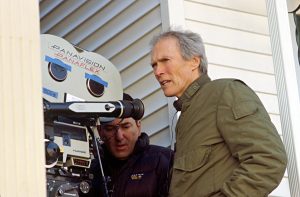 convict from a Huntsville, Texas prison. On the morning after Halloween in 1963, Butch (Costner) and another con kidnap an 8-year-old boy named Phillip (T.J. Lowther). After Butch dumps his partner, the two drive across the state with Texas Ranger Red Garnett (Eastwood) on their tail. The movie volleys between Red and Butch, and it soon concocts a semi-case of Stockholm syndrome for Phillip and the audience. Butch treats Phillip with esteem and kindness, so Costner does not wind up playing a complete bad guy, but Red is an empathetic figure as well. With an occasional protagonist and a fulltime protagonist on opposite sides of the law, “A Perfect World” reminds us that we do not live in one.
convict from a Huntsville, Texas prison. On the morning after Halloween in 1963, Butch (Costner) and another con kidnap an 8-year-old boy named Phillip (T.J. Lowther). After Butch dumps his partner, the two drive across the state with Texas Ranger Red Garnett (Eastwood) on their tail. The movie volleys between Red and Butch, and it soon concocts a semi-case of Stockholm syndrome for Phillip and the audience. Butch treats Phillip with esteem and kindness, so Costner does not wind up playing a complete bad guy, but Red is an empathetic figure as well. With an occasional protagonist and a fulltime protagonist on opposite sides of the law, “A Perfect World” reminds us that we do not live in one. – Sean Penn and Tim Robbins won Oscars for Best Actor and Best Supporting Actor, respectively, in Eastwood’s dark crime tale filled with massive Shakespearean themes, when three childhood friends’ (Penn, Robbins and Kevin Bacon) lives intersect as adults under brutal circumstances. In chilly Boston, a coed is found dead, and the three previously-mentioned men approach the incident from very different perspectives, while the tightly-wound and complicated murder investigation pushes forward. An all-star cast – including, Laurence Fishburne, Marcia Gay Harden and Laura Linney – complete a mesmerizing experience which brings constant thoughts friendships, loyalties and how the sins of the past impact the present. The film’s most memorable line – “The last time I saw Dave” - will haunt you for years.
– Sean Penn and Tim Robbins won Oscars for Best Actor and Best Supporting Actor, respectively, in Eastwood’s dark crime tale filled with massive Shakespearean themes, when three childhood friends’ (Penn, Robbins and Kevin Bacon) lives intersect as adults under brutal circumstances. In chilly Boston, a coed is found dead, and the three previously-mentioned men approach the incident from very different perspectives, while the tightly-wound and complicated murder investigation pushes forward. An all-star cast – including, Laurence Fishburne, Marcia Gay Harden and Laura Linney – complete a mesmerizing experience which brings constant thoughts friendships, loyalties and how the sins of the past impact the present. The film’s most memorable line – “The last time I saw Dave” - will haunt you for years.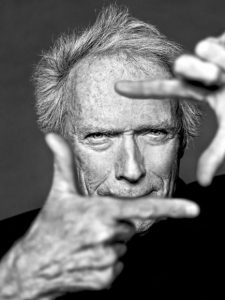 Best Director, Best Supporting Actor for Gene Hackman, and Best Film Editing and proved – along with “Dances with Wolves” (1990) – that the genre can win the Academy’s top prize. Eastwood delivers a prized role as well as William Munny, an aging cowboy who takes one last bounty hunter job after years of living a clean life. Munny frequently speaks of his violent past, but the audience presently sees a cordial and respectful man, so any previous sinister dealings seem either deeply buried or simply exaggerated. In the movie’s final act, however, Sheriff Little Bill Daggett (Hackman) tests Munny’s patience with potentially explosive consequences. Most everything in the town of Big Whiskey, Wyo. (actually filmed in Alberta, Canada) feels bleak and cold, and the tones match Munny’s job of attempting to kill two cowboys for a group of prostitutes. In this world, no one is completely innocent, and Munny mentions to one of his partners in passing, “We all have it coming, Kid.” Not only does Little Bill have it coming, but so does the Kid, the targeted cowboys, Munny’s other partner named Ned (Morgan Freeman), and Munny himself. Munny’s past sins – unfortunately – are just skin-deep, and even though his wife forgave his past misdeeds, to him, they remain unforgiven.
Best Director, Best Supporting Actor for Gene Hackman, and Best Film Editing and proved – along with “Dances with Wolves” (1990) – that the genre can win the Academy’s top prize. Eastwood delivers a prized role as well as William Munny, an aging cowboy who takes one last bounty hunter job after years of living a clean life. Munny frequently speaks of his violent past, but the audience presently sees a cordial and respectful man, so any previous sinister dealings seem either deeply buried or simply exaggerated. In the movie’s final act, however, Sheriff Little Bill Daggett (Hackman) tests Munny’s patience with potentially explosive consequences. Most everything in the town of Big Whiskey, Wyo. (actually filmed in Alberta, Canada) feels bleak and cold, and the tones match Munny’s job of attempting to kill two cowboys for a group of prostitutes. In this world, no one is completely innocent, and Munny mentions to one of his partners in passing, “We all have it coming, Kid.” Not only does Little Bill have it coming, but so does the Kid, the targeted cowboys, Munny’s other partner named Ned (Morgan Freeman), and Munny himself. Munny’s past sins – unfortunately – are just skin-deep, and even though his wife forgave his past misdeeds, to him, they remain unforgiven. This Crusoe story, ‘The Wild Life’, is visually pleasant but feels lost
This Crusoe story, ‘The Wild Life’, is visually pleasant but feels lost
 Complete Unknown
Complete Unknown
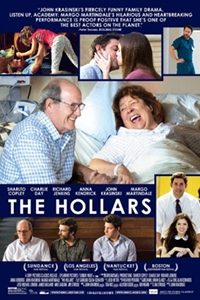 Two solid performances cannot stop ‘The Hollars’ from feeling hollow
Two solid performances cannot stop ‘The Hollars’ from feeling hollow
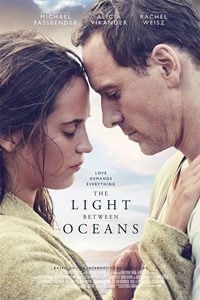 The emotional, beautifully-filmed ‘The Light Between Oceans’ had me at G’day
The emotional, beautifully-filmed ‘The Light Between Oceans’ had me at G’day








